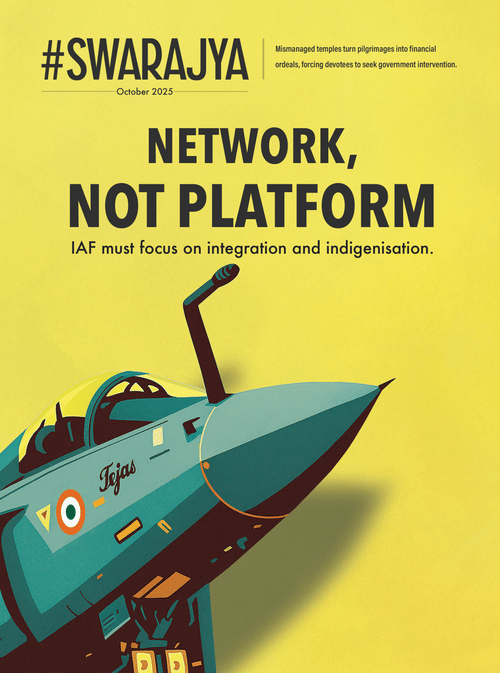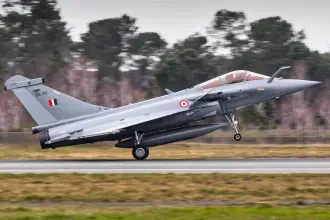World
Why Bangladesh's Success Is Important To India
Mohamed Zeeshan
Jun 09, 2015, 08:59 PM | Updated Feb 11, 2016, 10:09 AM IST
Save & read from anywhere!
Bookmark stories for easy access on any device or the Swarajya app.


If Bangladesh succeeds, New Delhi will be one step closer to realizing its vision in South Asia. But just as equally dangerous would be Bangladesh’s failure
Prime Minister Narendra Modi resumed his vigorous foreign policy this weekend by travelling to Bangladesh. The plan of his visit had generated more fervor in Dhaka than it had in New Delhi. But that does not undermine its importance here. Even by South Asian standards, India’s relationship with Bangladesh could only be described as ‘sweet-and-sour’.
Dhaka, in the past, had to cope with deep-rooted challenges from radical Islamists who did not prescribe to Bangladesh’s relatively more secular Bengali nationalism. Many of these groups targeted India, and proved to be a major bone of contention between New Delhi and Dhaka for years. The result has been difficult. While democracy has held better than it has in other Muslim countries to the west of India, the economy has stumbled from time to time. Today, Bangladesh has become notorious for sending out batches of illegal immigrants into its neighboring states, many of these fleeing in search of better livelihoods.
Yet, on all counts, Bangladesh ought to have been a massive success story following its independence. Unlike Pakistan’s, Bangladesh’s nationalism did not flow from the difficult and hugely exploitable contours of religion (in fact, it had fought for freedom from Islamic Pakistan). Instead, Bangladesh drew its legitimacy as a nation from the better defined linguistic and cultural unity of its masses. That is part of why democracy has held better than it has in Pakistan, or Iran, for example.
If Bangladeshi nationalism ought to have allowed its people stay united and quarrel less, the bounties of nature ought to have ensured better economic conditions for its impoverished people. In the Partition of 1947, almost 90% of India’s jute-growing havens in Bengal went to what is today Bangladesh. Fertile river plains sweep across the country and provide for irrigation and waterways. Yet, in 2006, the World Bank reported that only half of Bangladesh’s agricultural land is irrigated. Agricultural production is far less than that in India or Pakistan. Per capita income languishes below US$1000, unemployment is at 4.5% and the high population density (Bangladesh is almost as densely populated as city states such as Hong Kong and Singapore) only makes matters worse.
All these problems eventually spill onto the street and across the border. In the last year or so, Bangladesh has seen widespread political protests and street clashes – between Islamists and liberals, government and opposition, and people and police. Illegal immigrants don’t just swarm India; the last few weeks have seen a huge refugee crisis as far away as in the Far East, with boats smuggling Bangladeshis found floating out at sea.
All this should worry Dhaka, but they should also worry New Delhi. Bangladesh forms the geographical link between mainland India and its disconnected North East, where separatist elements have long made use of the challenges to social and economic integration. New Delhi has proposed to run a bus from Kolkata to Agartala via Dhaka – flagged off by Prime Minister Modi on his visit – and many more railroad, waterway and highway projects are planned over the coming years to connect the Indian mainland to the North East through Bangladesh. But all of these would function safely only if India can ensure peace in Bangladesh and resolve the issue of illegal immigration.
That is not all. For all its woes, Bangladesh still remains one of the more stable and promising countries in India’s volatile neighborhood – and, therefore, is also an integral part of India’s larger South Asian policy. India’s success in South Asia would largely depend on its ability to economically integrate the region and Bangladesh, much like Sri Lanka, is a ready partner for the project. Bangladesh’s dense population provides both a market for Indian goods as well as cheap unskilled labor for Indian industries, and Bangladeshis in turn await the inflow of opportunities from the Indian economy. If New Delhi can tap this reservoir, it will not only score points in its neighborhood policy, but also aid in curbing Islamist militancy in the region.
Modi’s visit to Bangladesh was not one that aimed at merely bolstering bilateral trade or investment. This was no bilateral business. Rather, Modi’s agenda formed an integral part of India’s larger South Asian policy and the vision to economically integrate the region. New Delhi has much to gain from Bangladesh’s promise as a nation, democracy and economy. If Bangladesh succeeds, New Delhi will be one step closer to realizing its vision in South Asia. But just as equally dangerous would be Bangladesh’s failure. History shows that Dhaka does not always keep its problems within its own borders.
Mohamed Zeeshan is a policy analyst based in Bangalore, India. He also writes for The Diplomat and The Huffington Post.





